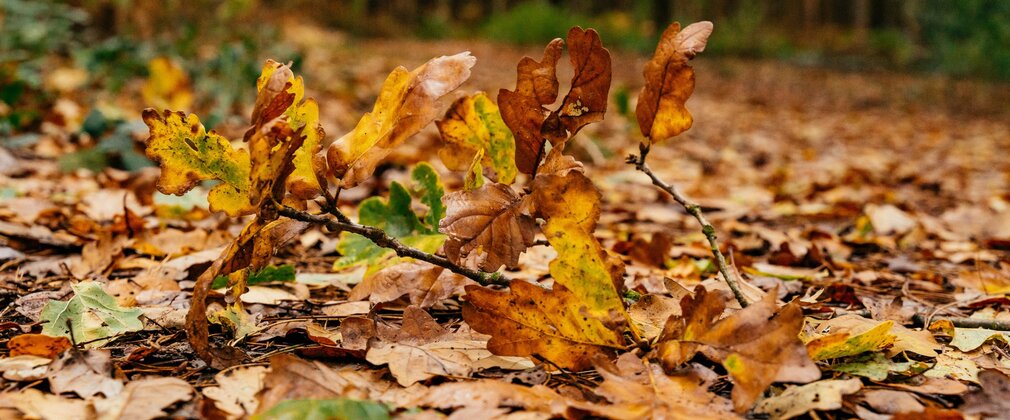
It’s time to get the cosy jumpers out and kick your way through piles of fallen leaves. The nation's forests are a great place to experience the best of autumn, from colourful leaves and fungi to wildlife activity and atmospheric strolls. So slow down, get out in nature and discover the signs of autumn all around you.

Fiery autumn colours
Crunchy, colourful autumn leaves are one of the highlights of this time of year. When the season changes from summer to autumn, leaves have done their job for the year and many turn from green to yellow, orange and then red, before falling.
Shorter days and cooler weather sparks this change, as green chlorophyll breaks down to reveal warmer tones beneath. Sometimes you might see beech, oak and hornbeam trees holding on to their brown leaves well into winter before they finally fall. Most conifers stay green all year round and have needles rather than leaves, adapted to surviving colder weather.
Seasonal fruits and seeds
Woodlands are filled with fruits, seeds and nuts in autumn. Shiny conkers with their spiky jackets, golden acorns in their cups and scaly pine, fir and spruce cones litter the forest floor. Hedgerows and forest edges of full of blackberries and rosehips too.
Many animals are busy making use of this abundance of food, collecting it up to store for harsher weather. Look out for jays with their streak of blue as they hoard acorns from oak trees. Their resourceful habits also help mighty oaks to regenerate when some of these buried seeds grow into tiny seedlings.


Familiar earthy smells
The aroma of damp woodland on a cool day is a familiar smell of autumn. As the sweet, summery scents fade and the air gets cold and moist, we can detect the muskier smell of leaf litter breaking down. When leaves drop, their nutrients are recycled and broken down by earthworms, woodlice, bacteria and fungi, releasing these earthy smells into the air.
Familiar fungi such as cepe, oyster and chanterelle can all be found in England's forests. These play an important role in woodland ecosystems, and some are rare and endangered. Please leave fungi in their environment, unless you have permission and know they are safe to take.
Wildlife activity and spectacles
Autumn is a time of migration for many birds. Swallows and house martins start their journeys south, and arrivals include fieldfares and redwings, escaping the colder winters in Northern and Eastern Europe. Others, including robins, become more prominent at this time of year. Look out for birds feeding on berries at woodland edges.
Autumn is also a great time for spotting deer in the forest, as it's the rutting season when red, fallow and sika deer breed. The deer rut is an amazing natural spectacle to witness. Males lock antlers in a display of dominance, fighting for their right to breed with the females. Remember deer are wild animals, so the rut is best viewed from afar. Keep your distance from deer and stay on main paths to avoid distressing them.


Temperature shifts and changing views
The slight chill in the air becomes more noticeable as autumn progresses. Mornings are crisp and fresh, with mist often settling in valleys and among trees. Wrap up warm and take an early morning stroll in the forest for an atmospheric start to your day. Earlier sunsets later in the season also offer the chance to soak up beautiful woodland views.




